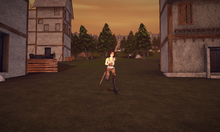
Blender is a free and open-source 3D computer graphics software tool set used for creating animated films, visual effects, art, 3D-printed models, motion graphics, interactive 3D applications, virtual reality, and, formerly, video games. Blender's features include 3D modelling, UV mapping, texturing, digital drawing, raster graphics editing, rigging and skinning, fluid and smoke simulation, particle simulation, soft body simulation, sculpting, animation, match moving, rendering, motion graphics, video editing, and compositing.

Processing is a free graphical library and integrated development environment (IDE) built for the electronic arts, new media art, and visual design communities with the purpose of teaching non-programmers the fundamentals of computer programming in a visual context.
IronPython is an implementation of the Python programming language targeting the .NET and Mono frameworks. The project is currently maintained by a group of volunteers at GitHub. It is free and open-source software, and can be implemented with Python Tools for Visual Studio, which is a free and open-source extension for Microsoft's Visual Studio IDE.

jMonkeyEngine is an open-source and cross-platform game engine for developing 3D games written in Java. It can be used to write games for Windows, Linux, macOS, Raspberry Pi, Android, and iOS. It uses Lightweight Java Game Library as its default renderer, and also supports another renderer based on Java OpenGL.
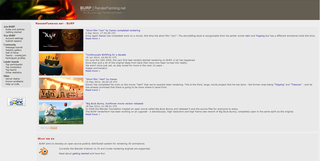
Big and Ugly Rendering Project (BURP) is a non-commercial volunteer computing project using the BOINC framework for the rendering of 3D graphics that has been in hibernation as of 2020. The project website currently shows the status as "extended maintenance" until 2027.

The Blender Foundation is a Dutch nonprofit organization (Stichting) responsible for the development of Blender, an open-source 3D content-creation program.

The Blender Game Engine was a free and open-source 3D production suite used for making real-time interactive content. It was previously embedded within Blender, but support for it was dropped in 2019, with the release of Blender 2.8. The game engine was written from scratch in C++ as a mostly independent component, and includes support for features such as Python scripting and OpenAL 3D sound.
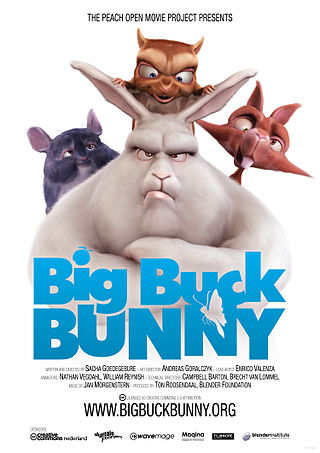
Big Buck Bunny is a 2008 short computer-animated comedy film featuring animals of the forest, made by the Blender Institute, part of the Blender Foundation. Like the foundation's previous film, Elephants Dream, the film was made using Blender, a free and open-source software application for 3D computer modeling and animation developed by the same foundation. Unlike that earlier project, the tone and visuals departed from a cryptic story and dark visuals to one of comedy, cartoons, and light-heartedness.

Yo Frankie! is an open source video game made by the Blender Institute, part of the Blender Foundation, originally scheduled for release in August 2008. It is based on the universe and characters of the free film produced earlier in 2008 by the Blender Institute, Big Buck Bunny. Like the Blender Institute's previous open film projects, the game is made using free software. Yo Frankie! runs on any platform that runs Blender and Crystal Space, including Linux, macOS and Microsoft Windows.

Sintel, code-named Project Durian during production, is a 2010 computer-animated fantasy short film. It was the third Blender "open movie". It was produced by Ton Roosendaal, chairman of the Blender Foundation, written by Esther Wouda, directed by Colin Levy, at the time an artist at Pixar and art direction by David Revoy, who is known for Pepper&Carrot an open source webcomic series. It was made at the Blender Institute, part of the Blender Foundation. The plot follows the character, Sintel, who is tracking down her pet Scales, a dragon. Just like the other Blender "open movies," the film was made using Blender, a free and open source software application for animation, created and supported by the Blender Foundation.
Cocos2d is an open-source game development framework for creating 2D games and other graphical software for iOS, Android, Windows, macOS, Linux, HarmonyOS, OpenHarmony and web platforms. It is written in C++ and provides bindings for various programming languages, including C++, C#, Lua, and JavaScript. The framework offers a wide range of features, including physics, particle systems, skeletal animations, tile maps, and others.
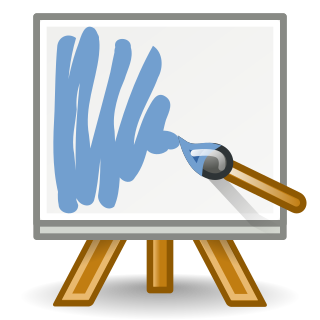
MyPaint is a free and open-source raster graphics editor for digital painting. It is available for Windows, macOS, and Unix-like operating systems.
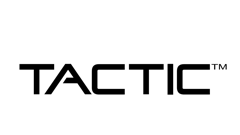
TACTIC is a web-based, open source workflow platform and digital asset management system supported by Southpaw Technology in Toronto, ON. Designed to optimize busy production environments with high volumes of content traffic, TACTIC applies business or workflow logic to combined database and file system management. Using elements of digital asset management, production asset management and workflow management, TACTIC tracks the creation and development of digital assets through production pipelines. TACTIC is available under both commercial and open-source licenses, and also as a hosted cloud service through Amazon Web Services Marketplace.

Construct is an HTML5-based 2D video game engine developed by Scirra Ltd. It is aimed primarily at non-programmers, allowing quick creation of games through visual programming. First released as a GPL-licensed DirectX 9 game engine for Microsoft Windows with Python programming on October 27, 2007, it later became proprietary software with Construct 2, as well as switching its API technology from DirectX to NW.js and HTML5, as well as removing Python and adding JavaScript support and its plugin SDK in 2012, and eventually switched to a subscription-based model as a web app.
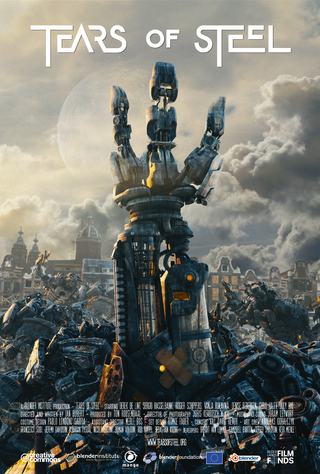
Tears of Steel is a short science fiction film by producer Ton Roosendaal and director/writer Ian Hubert. The film is both live-action and CGI; it was made using new enhancements to the visual effects capabilities of Blender, a free and open-source 3D computer graphics app. Set in a dystopian future, the short film features a group of warriors and scientists who gather at the Oude Kerk in Amsterdam in a desperate attempt to save the world from destructive robots.
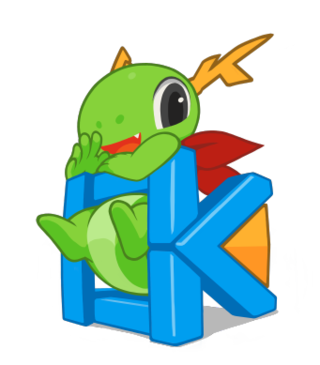
KDE Frameworks is a collection of libraries and software frameworks readily available to any Qt-based software stacks or applications on multiple operating systems. Featuring frequently needed functionality solutions like hardware integration, file format support, additional graphical control elements, plotting functions, and spell checking, the collection serves as technological foundation for KDE Plasma 5 and KDE Gear distributed under the GNU Lesser General Public License (LGPL).

Godot is a cross-platform, free and open-source game engine released under the permissive MIT license. It was initially developed by Argentine software developers Juan Linietsky and Ariel Manzur for several companies in Latin America prior to its public release in 2014. The development environment runs on many platforms, and can export to several more. It is designed to create both 2D and 3D games targeting PC, mobile, and web platforms and can also be used to develop non-game software, including editors.
Blend4Web is a free and open source framework for creating and displaying interactive 3D computer graphics in web browsers.
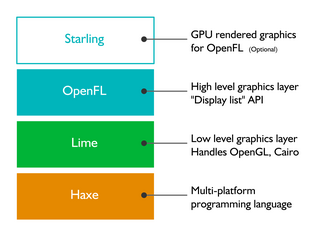
OpenFL is a free and open-source software framework and platform for the creation of multi-platform applications and video games. OpenFL applications can be written in Haxe, JavaScript, or TypeScript, and may be published as standalone applications for several targets including iOS, Android, HTML5, Windows, macOS, Linux, WebAssembly, Flash, AIR, PlayStation 4, PlayStation 3, PlayStation Vita, Xbox One, Wii U, TiVo, Raspberry Pi, and Node.js.
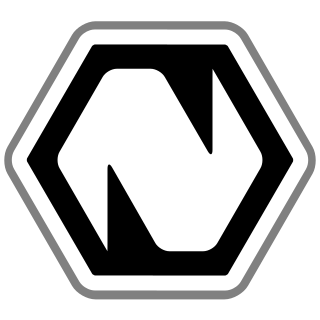
Natron is a free and open-source node-based compositing application. It has been influenced by digital compositing software such as Avid Media Illusion, Apple Shake, Blackmagic Fusion, Autodesk Flame and Nuke, from which its user interface and many of its concepts are derived.

